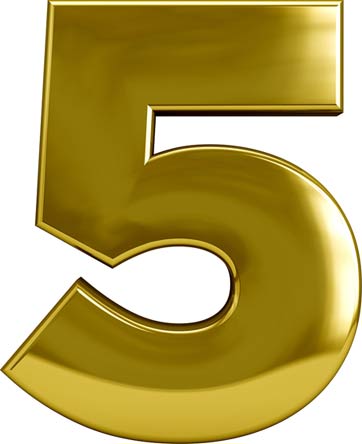
We've learned that President-elect Donald Trump has declined many intelligence briefings, delegating the daily task instead to Vice President-elect Mike Pence. "I get it when I need it," Trump said. "I'm, like, a smart person. I don't need to be told the same thing and the same words every single day for the next eight years." In some ways this is a departure from the approach of past presidents. But there's also widespread misunderstanding of the President's Daily Brief (PDB) and the traditions surrounding it. Here are five erroneous beliefs worth correcting.
Myth No. 1
The PDB has traditionally been for the president's eyes only.
The very title of this top-secret intelligence report says so: It's the president's book. And indeed, it is tailored to each president's individual needs. CIA officers in 1961 designed what was initially known as the President's Intelligence Checklist specifically for John F. Kennedy's tastes, using punchy words and phrases while avoiding clunky bureaucratic language and annoying classification markings. That checklist evolved into the President's Daily Brief in late 1964, as the agency reformatted and retitled the book of secrets to appeal to Lyndon Johnson's preferences. While the name has stuck, the content and format have continued to evolve. President Barack Obama receives his in digital form and reads it on a tablet.
But while through most of its history the document has been marked "For the President's Eyes Only," the PDB has never gone to the president alone. The most restricted dissemination was in the early 1970s, when the book went only to President Richard Nixon and Henry Kissinger, who was dual-hatted as national security adviser and secretary of state. In other administrations, the circle of readers has also included the vice president, the secretary of defense and the chairman of the Joint Chiefs of Staff, along with additional White House staffers. By 2013, Obama's PDB was making its way to more than 30 recipients, including the president's top strategic communications aide and speechwriter, and deputy secretaries of national security departments.
Myth No. 2
Senior intelligence officers have briefed past presidents in person every day.
The commander in chief has received the PDB every working morning for the past 50 years. In-person briefings, though, haven't been as frequent.
Presidents Gerald Ford, George H.W. Bush (previously a CIA director) and George W. Bush wanted face-to-face briefings daily. But they stand out as the exceptions. Johnson and Nixon rarely saw their CIA directors or senior intelligence officers for anything, much less to brief the PDB. Presidents Jimmy Carter and Ronald Reagan discussed the daily book with their national security advisers, not CIA officers. Presidents Bill Clinton and Obama received in-person presentations, but irregularly. Taken together, institutionalized daily briefings have occurred during less than 15 years of the PDB's half-century.
Former defense secretary Bob Gates, who has had insight into the use of the PDB by almost every president since Johnson, told me that "one of the greatest values of the PDB is the interaction with the president, which allows the leadership of CIA and the community to have a better idea of what's on the president's mind, where he is coming from on issues, what's on his agenda and what he needs to know." But most often feedback has been in response to the written product and conveyed through the national security adviser.
Myth No. 3
Presidents get most of their information on intelligence and national security from the PDB.
Vice President Dick Cheney, arguing that PDBs should be kept out of the hands of 9/11 investigators, called them "the family jewels." Observers often speak as if the president wouldn't know anything about global developments without them. And they put inordinate weight on what appeared in the daily book around the time of a national security incident. For example, the House Select Committee on Benghaziinvestigated Obama's PDBs in the days around Sept. 11, 2012, to find out what and how he was told about the attack in that Libyan city.
The intelligence assessments in the PDB, however, are just one slice of a very large pie. Important information makes its way to the president throughout the day, especially during crises, from a variety of channels: meetings with top West Wing advisers, messages from the White House Situation Room, phone calls from national security officials and in-person intelligence briefings that extend beyond the material in the once-per-day PDB.
During the Cuban missile crisis, for example, Kennedy was briefed on Cuba in frequent meetings at the White House. His daily intelligence document kept him up to speed on other world events but largely neglected Cuba itself during those 13 days. Similarly, Johnson in early 1965 started receiving a daily Vietnam report from the CIA, obviating the need for the PDB to cover every detail on that topic as the war expanded.
Myth No. 4
Presidents have placed enormous weight on the PDB.
As the ultimate product of the intelligence community's collection and analytic efforts, the PDB tends to command respect, as some presidential comments reflect. Speaking with Trevor Noah on "The Daily Show" on Dec. 12, Obama implied that without the PDB, he would be "flying blind." Clinton told me that even on an uneventful day, he got 90 percent of what he needed to make good decisions across a range of issues from the daily document. "I can't imagine any president not taking it seriously, not reading it carefully," he said.
But several presidents have also pointed out the PDB's flaws and inconsistencies. Less than two months into his term, President Jimmy Carter told intelligence officials that he was "disappointed" with the analysis he received and wanted more "divergent views." And in November 1978, as protests in Iran against U.S. ally Shah Mohammad Reza Pahlavi spiraled out of control, Carter sent a blistering note to his national security team lamenting the "quality of our political intelligence." The PDB also exasperated Clinton - "all the time," he told me - because he wanted more than it could provide. He even told the 9/11 Commission in April 2004 that he found the Secretary's Morning Summary from the State Department's Bureau of Intelligence and Research more helpful than the PDB in providing context for developments overseas.
Of all the presidents in the past 50 years, Nixon placed the least emphasis on the book. "The PDB was not a central document in our thinking," Kissinger told me. "It was one input." Nixon's distrust of the CIA prompted him to undervalue most of the agency's judgments, if he read them at all. In a meeting of the National Security Council in June 1969, he accused analysts of trying to use intelligence to support conclusions, rather than to make conclusions. He didn't offer any direct feedback on a single PDB item during more than 51 / 2 years in office.
The PDB isn't worth the president's time.
The PDB contains timely and, hopefully, accurate assessments of national security threats and foreign policy opportunities. Each article, drafted by CIA analysts - and, since post-9/11 reforms kicked in more fully in 2005, by their colleagues across the intelligence community - synthesizes classified and unclassified source material into an assessment that is usually no longer than a single page, focused on what the president needs to know rather than what he wants to hear. But does the PDB really repeat things "every single day" for the busiest man in the world?
A newcomer to analysis could be forgiven for underestimating the value of successive articles about the same country, region or city that share similar probabilistic and estimative language. But the slight distinctions from one report to the next often provide the best decision advantage for the president, whether he's smart or not. As Obama explained in an interview last January, when he goes through the PDB, "I'm looking at: Are there significant differences?" The PDB's insights into what other governments, groups and individuals around the globe are doing or considering doing - even if only marginally different than in the days or weeks before - help the commander in chief get ahead of crises before they develop or react to them more confidently if they do erupt. Even when the text seems repetitive, there's value in such incremental updates. Clinton, for example, told me there were few days when he felt he got nothing out of the PDB.
David Priess, a former analyst and daily intelligence briefer at the CIA, is the author of "The President's Book of Secrets: The Untold Story of Intelligence Briefings to America's Presidents from Kennedy to Obama."


 Contact The Editor
Contact The Editor
 Articles By This Author
Articles By This Author
